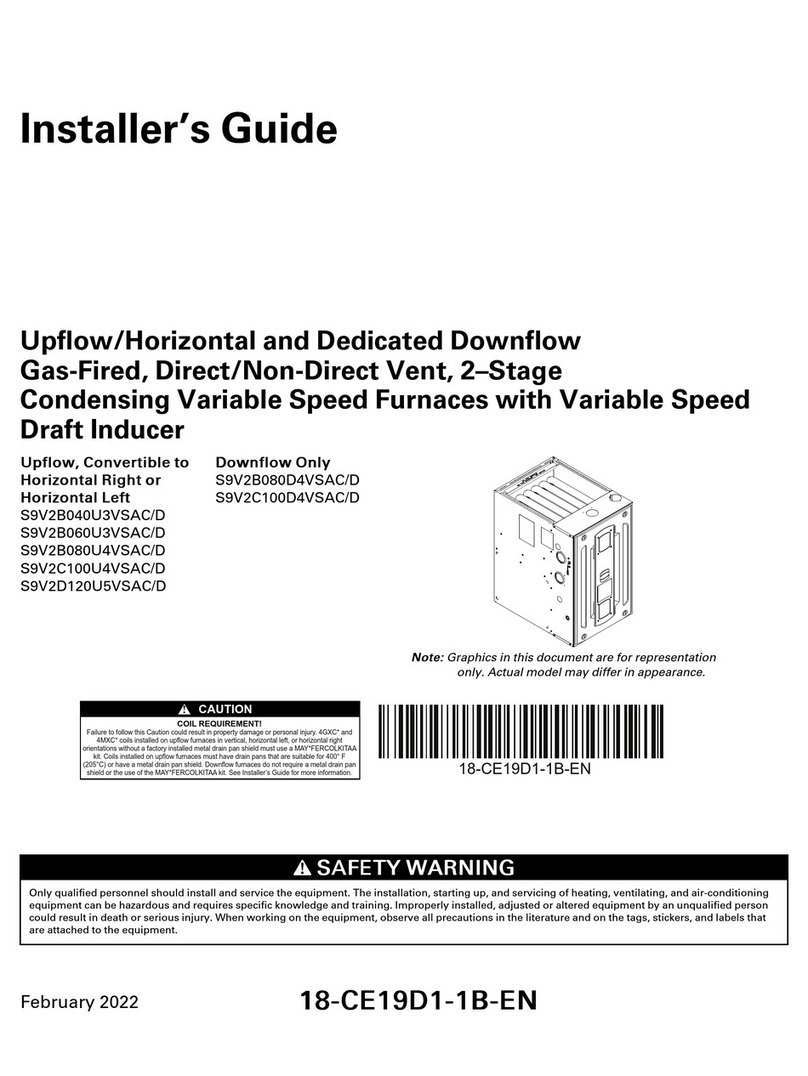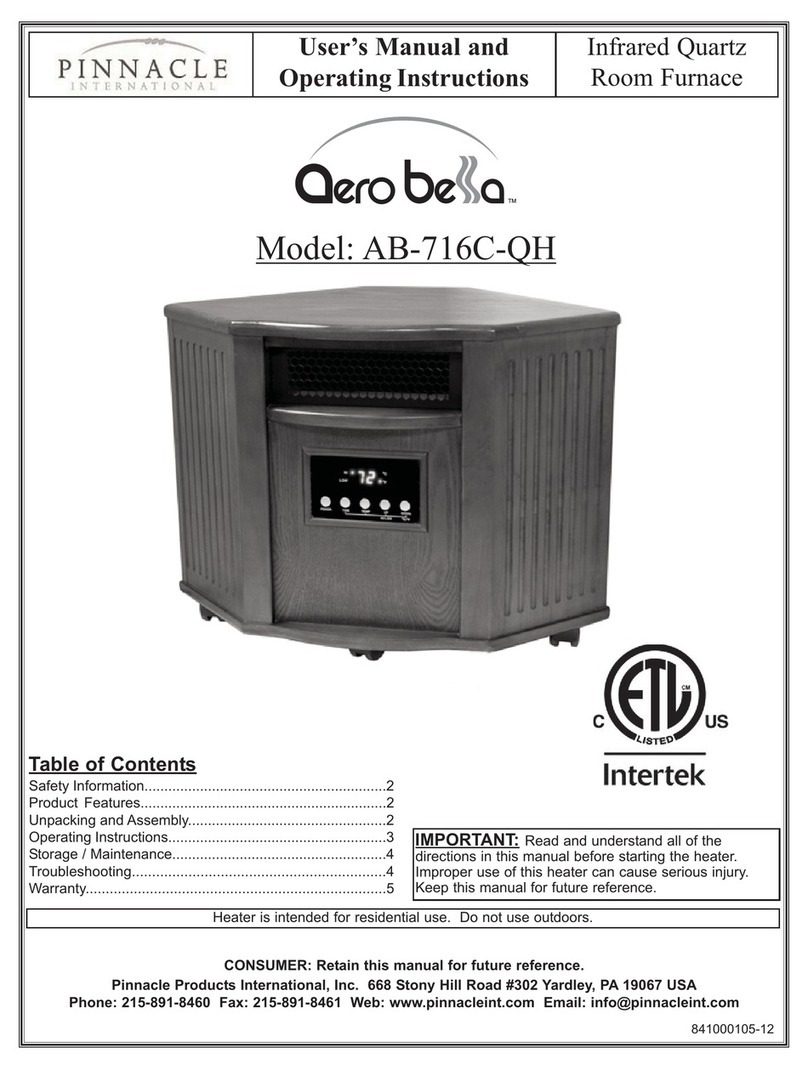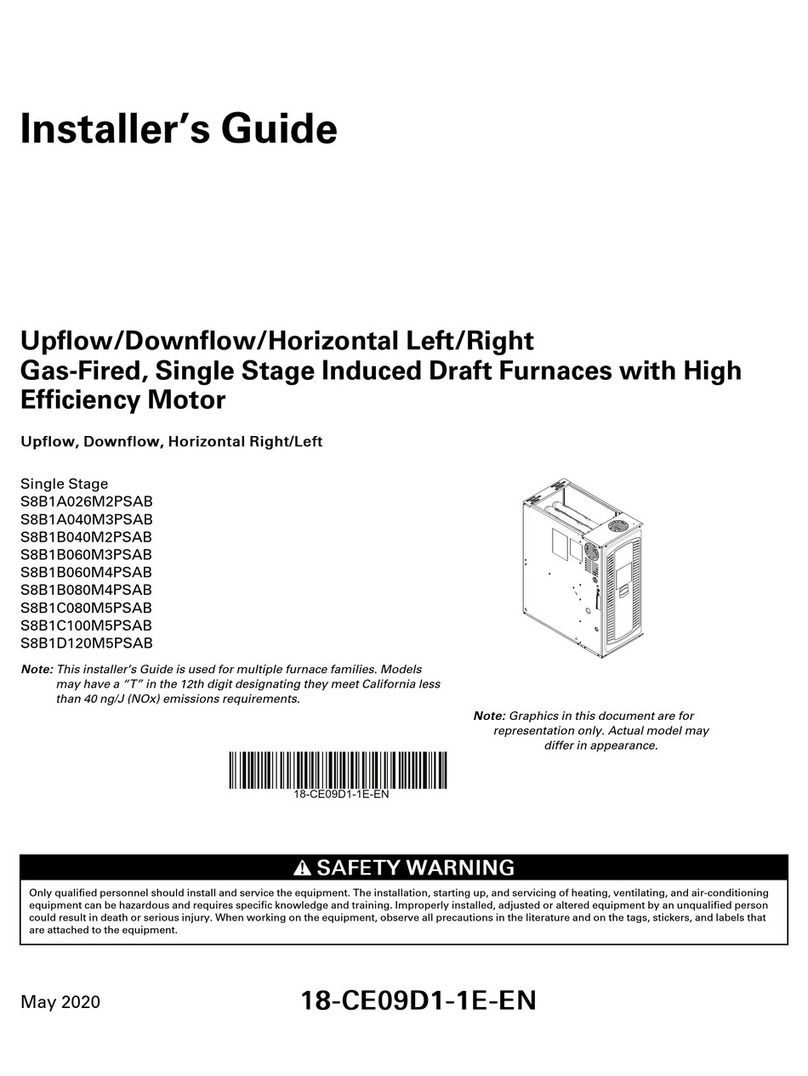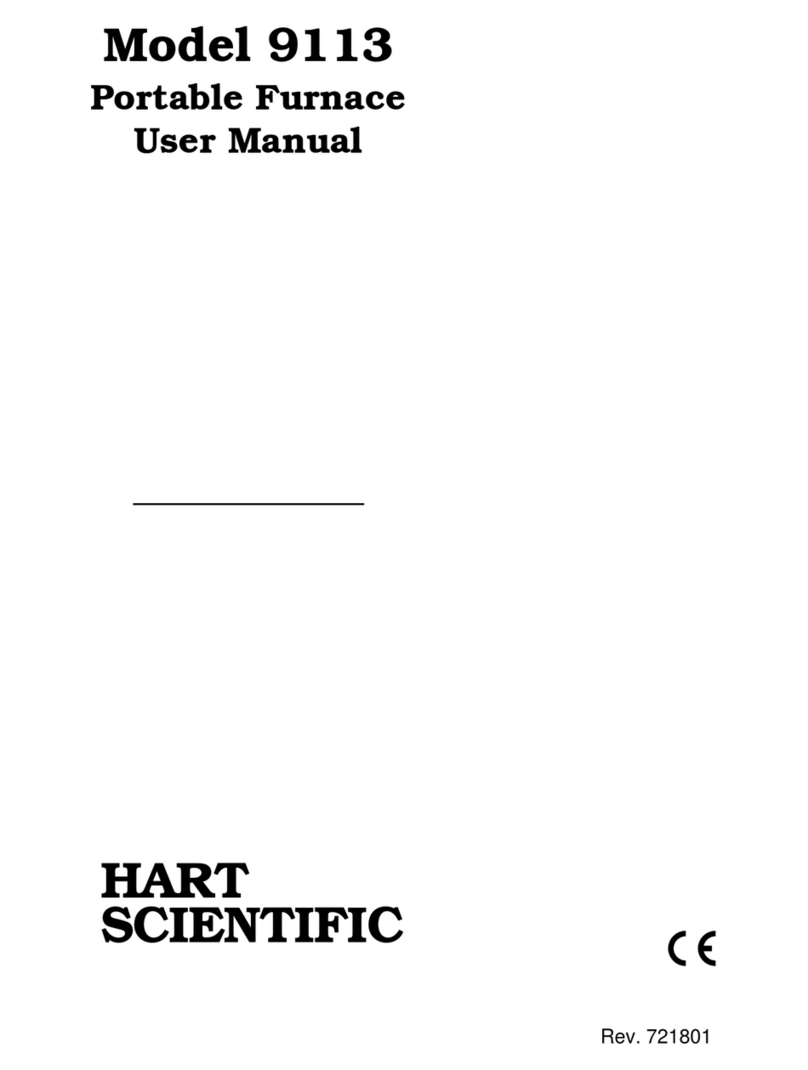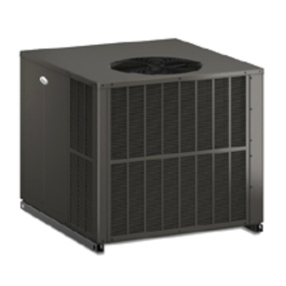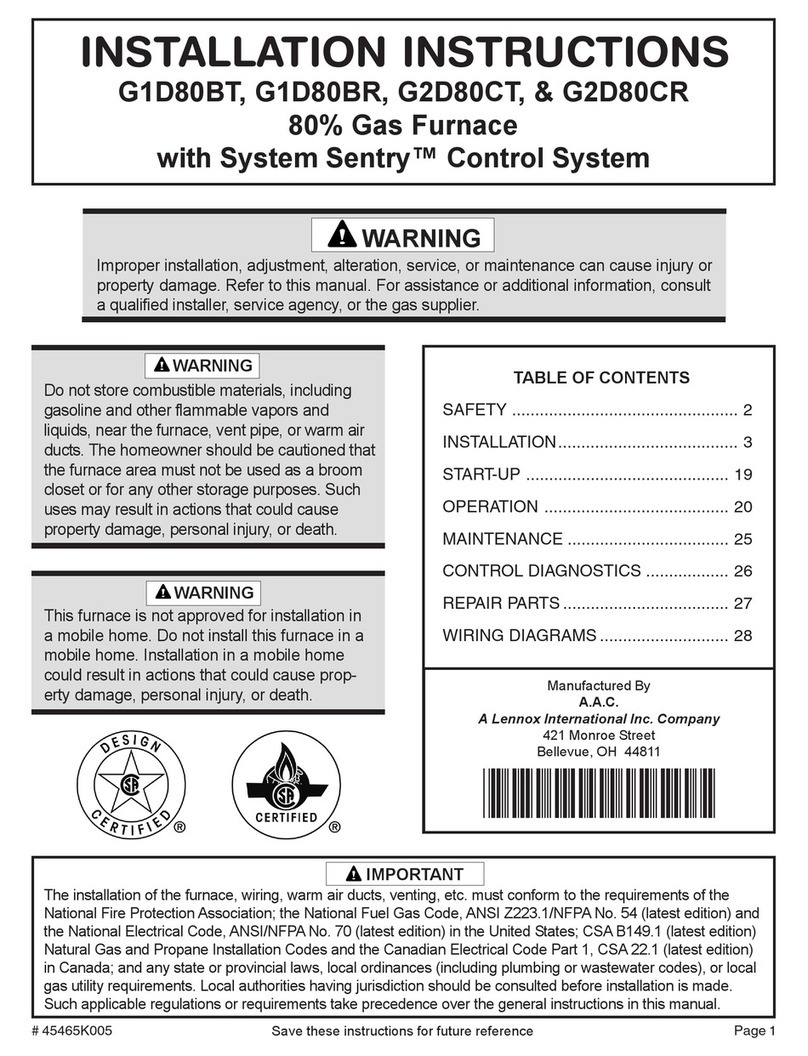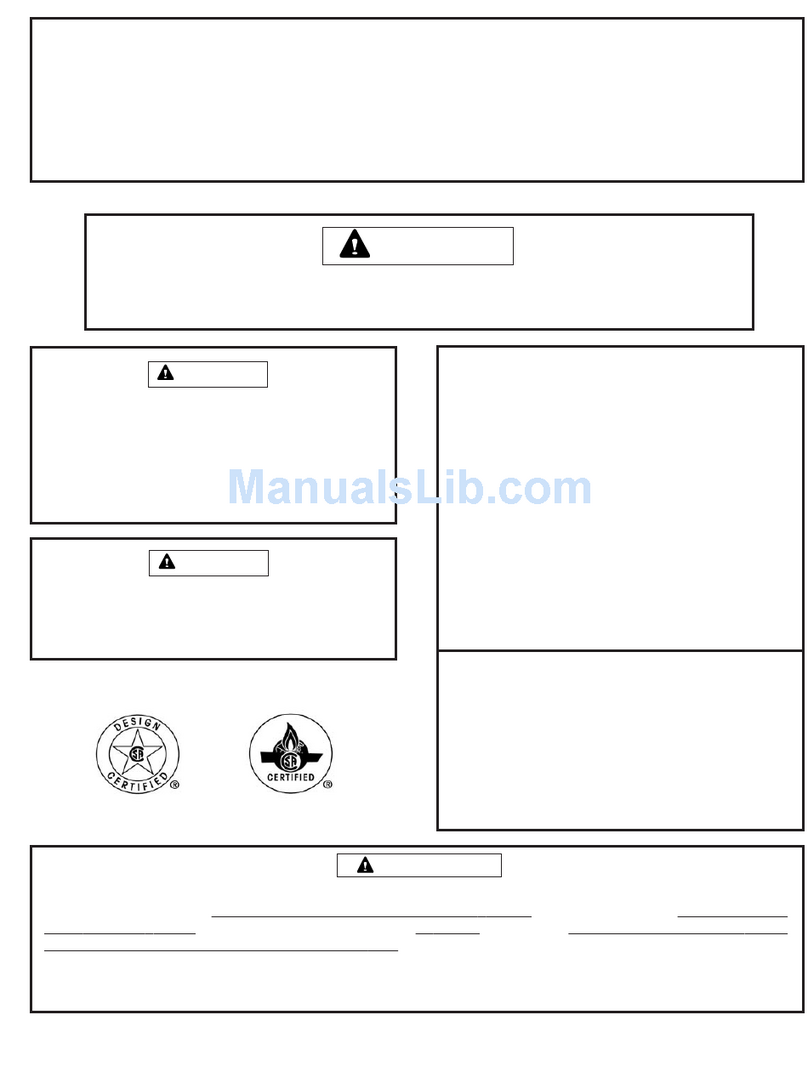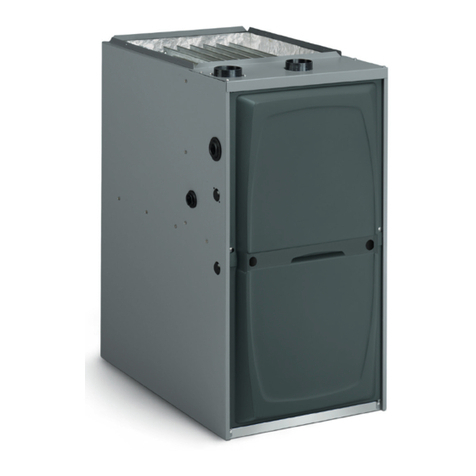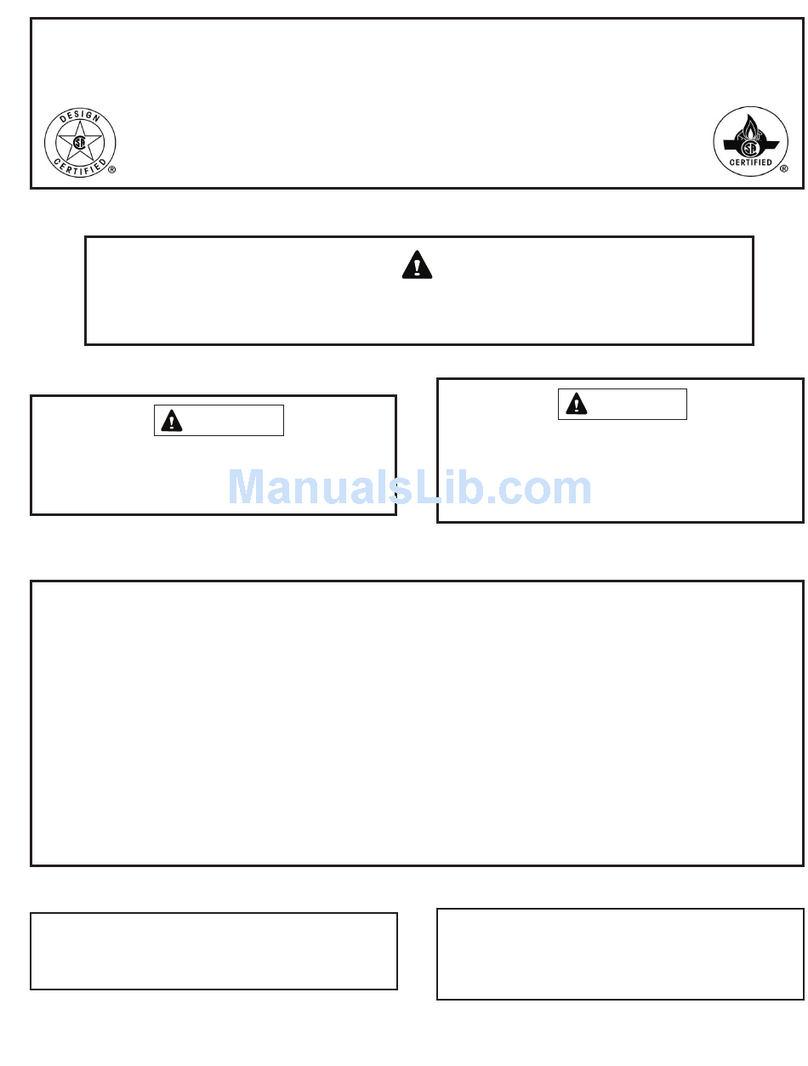
Page 2 # 44876D006
INSTALLATION
This EF electric furnace is designed for ease of installation
featuring horizontal, upflow, and downflow (counterflow)
applications. The units are shipped from the factory
completely assembled. Accessories may also be ordered
as field-installed items. All models are designed for
indoor installations only.
Read the entire instruction manual before starting the
installation. Several of the installation steps can be done
prior to setting the unit in place and doing this can save
time and simplify installation. Do not remove the cabinet
knockouts until it has been determined which knock-
outs will need to be removed for the installation.
Determining which knockouts to remove will depend on
application and in some cases preference.
These instructions are intended to be a general
guideline and do not supersede any local or national
codes. Installation must conform with the local
building codes and with the latest editions of the
National Electric Code or Canadian Electric Code.
Improper installations not following these instructions can
result in unsatisfactory operation and/or dangerous
conditions and may void the unit warranty.
General Information
The EF electric furnace may be used with optional mating
furnace coil cabinets in upflow, counterflow, or horizontal
applications (see AIRFLOW CONFIGURATIONS on page 11
for acceptable system configurations).Tie-plates and the
necessary hardware are packaged with the blower sections to
connect the furnace and coil section cabinets together.
To avoid drain pan overflow of coil cabinets, the web
must be removed from inside any threaded drain pan
hole to which a drain line is to be connected. Use care
when removing the web so as to not damage the coil.
To avoid property damage caused by condensate drain
blockage, install a field fabricated auxiliary drain pan with
a separate drain line to the outside under any indoor
electric furnace where condensate overflow could occur. If
local building codes apply, install per those codes.
Select the best position which suits the installation site
conditions.Take into consideration required clearances,
space, routing requirements for refrigerant line, conden-
sate disposal, filters, ductwork, wiring, and accessibility for
service. Refer to the unit specifications sheet and the unit
rating plate for specific information.
These electric furnaces are completely factory assembled
and all components are performance tested. Each unit
consists of a blower assembly, optional refrigerant coil,
and controls, in an insulated galvanized factory finished
enclosure, and may also include electric heat as specified.
Knockouts are provided for electrical power wiring entrance.
When used on cooling applications, excessive sweating
may occur when unit is installed in a very humid space.
If installed in an unconditioned space, sealant should be
applied around the power wires, control wires, refrigerant
tubing, and condensate lines where they enter the cabinet.
Power wires should be sealed on the inside where they
exit the conduit opening. Sealant is required to prevent air
leakage into and condensate from forming inside the unit,
control box, and on electrical controls.
The unit must be installed in such a way as to allow free
access to the coil compartment and blower/control
compartment.
The unit must be installed in a level position to ensure
proper condensate drainage. Make sure unit is level in
both directions within 1/8".
Units with circuit breakers installed in the vertical
position must have breaker switch position “ON” in
the up position and switch position “OFF” in the down
position. This is necessary to meet agency certification
and National Electric Codes requirements.
Conversion to Vertical Downflow
The EF furnace may be converted for vertical downflow
applications.The circuit breaker(s) must be rotated 180°.
To comply with certification and the National Electric
Code, units with circuit breakers installed in the
vertical position must have circuit breakers installed
so that the breaker switch “ON” position and marking
is up, and “OFF” position and marking is down.
All electric furnaces installed with a mating coil section
must follow the instructions listed below for proper con-
densate drainage. It is recommended that the auxiliary
drain be connected to a drain line for all units. If the
auxiliary drain is not connected, it must be plugged with
provided cap. For counterflow units, the auxiliary drain
must be connected and routed to a drain.
Horizontal Installations
Horizontal installations can be left or right hand. Adequate
support must be provided to insure cabinet integrity.
Ensure that there is adequate room to remove service and
access panels if installing in the horizontal position. Refer
to the air flow configuration drawings on page 11 for
correct horizontal coil installations.
Ductwork and Airflow
Maintain all required clearances to combustible
surfaces as stated on the unit rating plate.


